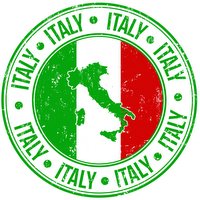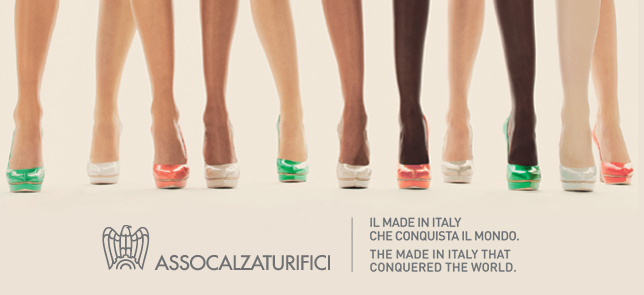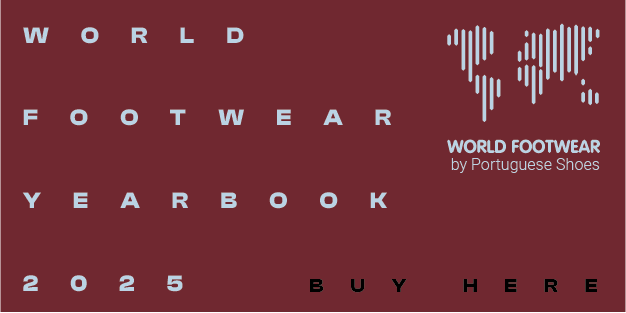Italian footwear industry shows signs of recovery

In 2013 Italy’s footwear exports increased 2.5% in volume and 5.6% in value, and reached 220 million pairs valued at 8 073 million euros. The Italian industry managed to invert the deterioration on exports registered in 2012 and seems to be on the growth path again. Average price of the Italian footwear was up by 3.1% and now reaches 36.73 euros
In the words of Assocalzaturifici, the Italian Footwear Association, “The work performed last year in terms of strategic corporate reviews and international promotion is bearing fruits, as evidenced by the growth in production, which should reach 3.3% in value and 1.8% in volume.” However, the association recognizes the existence of two different realities behind the overall numbers, as the domestic and international markets can be at odds: on the one hand exports are continuing to grow, witnessing the competitiveness of Italian products; on the other hand, the association alerts to the collapse in domestic consumption. It is their belief that the Italian footwear sector has experimented growth due to the recovery of international markets and the increase of Italian companies’ competitiveness, as economic crisis has kept less efficient companies off the market. Larger companies were in a better position to differentiate their export markets, enhancing their capability of being resilient against specific market turbulence in certain areas and were the first to seize the early signs of recovery. However, smaller manufacturing companies, especially those whose business is still more focused on the domestic market, continue to struggle.
Out of the 8 073 million euros of exported footwear 53% had an European country as destination, and overall top buyers are France (16%), Germany (11%), US (10%), Switzerland (9%) and Russia (8%). A special note to sales going to France, as these had an increase of 10.0% in volume and 9.6% in value, now reaching 42.6 million pairs at 1 323 million euros. In terms of the product mix, almost two thirds of exports are leather footwear, with 133 million pairs valued at 6 659 million euros, and an average price of 49.96 euros. Textile and rubber and plastic footwear follow with 7% share each.
From the top 20 buyers of Italian footwear, Hong Kong and China pay the highest average price, 113.37 euros and 106.94 euros by pair, respectively. According to Assocalzaturifici, these countries are two of the most important foreign markets for Italian Footwear not only in terms of average export price, but also in terms of growth potential. Nevertheless, the Italian Association recognises the specificities of the Chinese market as “distribution network in the country is not so developed yet and to find commercial channels is still difficult for most of SMEs. Partnership approach and investment with a local partner or establishing medium-term entrepreneurial projects are still the most successful strategies. Yet, there are clear signs that also independent businesses are beginning to play a role in the footwear market and that they are looking for quality products to be sold in multi-brand boutiques. A direct evidence is represented by our international fair in China, theMICAMshanghai, a medium-term project to support Italy’s, Europe’s and world’s leading footwear manufacturers to enter a multifaceted market with a huge unexpressed potential.”
Bearing in mind the internationalization of the Italian industry, the Association underlines the importance of entering far markets without losing awareness of their inner volatility and unpredictability, namely the impact of exchange rates fluctuation, which is identified by the Italians as a big threat to the competitiveness of their manufacturers.
In terms of Italian footwear imports, the performance in 2013 was frozen at 2012 numbers, with 303 million pairs of shoes bought to the rest of the world, worthing 3 834 million euros (compared to 302 million pairs at 3 835 million euros in 2012). Average import price is now 12.64 euros. Italy buys 20% of its imported footwear from China, at an average price of 6.27 euros. Romania (12%), Belgium and Netherlands (8% each), France and Vietnam (6% each) follow as the main suppliers.
A pressing topic impacting the footwear industry and very dear to Assocalzaturifici is the Made In legislation, as the Italian Association defends mandatory indication of the country of origin as a key measure to produce wealth for the European businesses, increasing current production levels, and boosting consumption. Their belief is that the Made In indication strengthens the connection between the indication of the country of origin and the product traceability for the purposes of consumer safety. “The indication of the country of origin is already widely used by many manufacturers on a voluntary basis and is not a cost. It is simply a label/tag to be applied to the product or package, containing very simple information. The point we should defend is basically this one: it is not enough, either for the consumer or for market surveillance authorities, to know the name and address of the manufacturer and the importer, since such data might not be sufficient to identify the actual place where the product was manufactured (or, in any event, the country where its last substantial manufacturing or processing took place)”, stated Assocalzaturifici.
Reflecting on the strategy for the industry, the Italian Association says setting clear priorities is key: the reduction of the tax rate on manufacturing SMEs, the support to financing access and the promotion of SMEs internationalization are crucial elements to achieve consumption stimulus, jobs and business safeguard and the consolidation of production and export levels. To achieve these objectives, the Italian Association believes that work at national and European level is required, defending that it is key that the European Commission is closer to the industry’s concerns, namely by adopting measures that consolidate at European level (the adoption of compulsory marking of origin is one of the basic elements of this policy) and by negotiating FTA with third countries in order to re-establish more competitive conditions for EU manufacturing SMEs on the international arena, guaranteeing market access while safeguarding European industry from market distortions caused by dumped imports and protectionism.
Out of the 8 073 million euros of exported footwear 53% had an European country as destination, and overall top buyers are France (16%), Germany (11%), US (10%), Switzerland (9%) and Russia (8%). A special note to sales going to France, as these had an increase of 10.0% in volume and 9.6% in value, now reaching 42.6 million pairs at 1 323 million euros. In terms of the product mix, almost two thirds of exports are leather footwear, with 133 million pairs valued at 6 659 million euros, and an average price of 49.96 euros. Textile and rubber and plastic footwear follow with 7% share each.
From the top 20 buyers of Italian footwear, Hong Kong and China pay the highest average price, 113.37 euros and 106.94 euros by pair, respectively. According to Assocalzaturifici, these countries are two of the most important foreign markets for Italian Footwear not only in terms of average export price, but also in terms of growth potential. Nevertheless, the Italian Association recognises the specificities of the Chinese market as “distribution network in the country is not so developed yet and to find commercial channels is still difficult for most of SMEs. Partnership approach and investment with a local partner or establishing medium-term entrepreneurial projects are still the most successful strategies. Yet, there are clear signs that also independent businesses are beginning to play a role in the footwear market and that they are looking for quality products to be sold in multi-brand boutiques. A direct evidence is represented by our international fair in China, theMICAMshanghai, a medium-term project to support Italy’s, Europe’s and world’s leading footwear manufacturers to enter a multifaceted market with a huge unexpressed potential.”
Bearing in mind the internationalization of the Italian industry, the Association underlines the importance of entering far markets without losing awareness of their inner volatility and unpredictability, namely the impact of exchange rates fluctuation, which is identified by the Italians as a big threat to the competitiveness of their manufacturers.
In terms of Italian footwear imports, the performance in 2013 was frozen at 2012 numbers, with 303 million pairs of shoes bought to the rest of the world, worthing 3 834 million euros (compared to 302 million pairs at 3 835 million euros in 2012). Average import price is now 12.64 euros. Italy buys 20% of its imported footwear from China, at an average price of 6.27 euros. Romania (12%), Belgium and Netherlands (8% each), France and Vietnam (6% each) follow as the main suppliers.
A pressing topic impacting the footwear industry and very dear to Assocalzaturifici is the Made In legislation, as the Italian Association defends mandatory indication of the country of origin as a key measure to produce wealth for the European businesses, increasing current production levels, and boosting consumption. Their belief is that the Made In indication strengthens the connection between the indication of the country of origin and the product traceability for the purposes of consumer safety. “The indication of the country of origin is already widely used by many manufacturers on a voluntary basis and is not a cost. It is simply a label/tag to be applied to the product or package, containing very simple information. The point we should defend is basically this one: it is not enough, either for the consumer or for market surveillance authorities, to know the name and address of the manufacturer and the importer, since such data might not be sufficient to identify the actual place where the product was manufactured (or, in any event, the country where its last substantial manufacturing or processing took place)”, stated Assocalzaturifici.
Reflecting on the strategy for the industry, the Italian Association says setting clear priorities is key: the reduction of the tax rate on manufacturing SMEs, the support to financing access and the promotion of SMEs internationalization are crucial elements to achieve consumption stimulus, jobs and business safeguard and the consolidation of production and export levels. To achieve these objectives, the Italian Association believes that work at national and European level is required, defending that it is key that the European Commission is closer to the industry’s concerns, namely by adopting measures that consolidate at European level (the adoption of compulsory marking of origin is one of the basic elements of this policy) and by negotiating FTA with third countries in order to re-establish more competitive conditions for EU manufacturing SMEs on the international arena, guaranteeing market access while safeguarding European industry from market distortions caused by dumped imports and protectionism.














